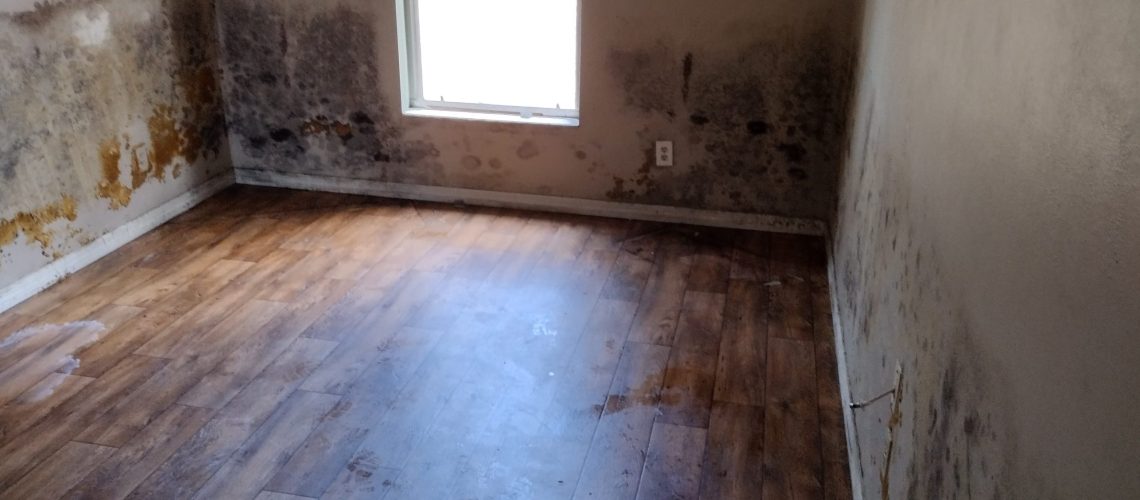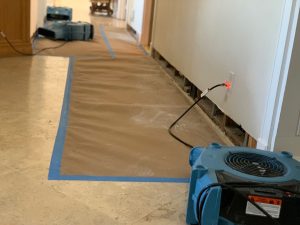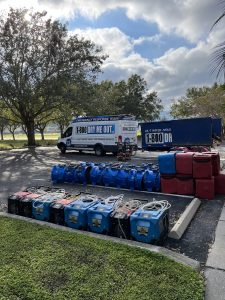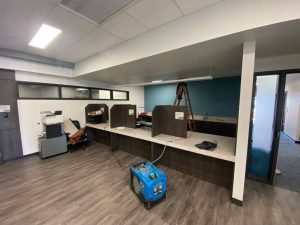Mold is one of those sneaky problems that can quietly grow in your home until it becomes a big (and costly) headache, and as a water damage restoration company, we’ve seen it all—from minor surface mold in bathrooms to full-blown infestations hidden behind walls and under flooring. The truth is, mold growth is incredibly common, but it’s also preventable when you know what to look for and how to stay on top of it.
In this guide, we’re breaking down the most common causes of mold in homes and, more importantly, how you can prevent it from taking hold. Whether you’ve just had water damage or you simply want to stay proactive, this info will help you breathe easier—literally!
Key Takeaways
- Mold growth in homes is usually caused by excess moisture, such as leaks, humidity, poor ventilation, or water damage.
- Common sources include leaking pipes, roof issues, flooding, and condensation on cold surfaces.
- Mold thrives in damp, dark, and poorly ventilated spaces, especially in bathrooms, basements, and crawlspaces.
- To prevent mold, fix leaks quickly, control humidity levels, improve airflow, and dry wet areas right away.
- Use mold-resistant materials in remodels and clean gutters regularly to prevent water buildup.
- Small mold patches can sometimes be cleaned at home, but larger infestations should be handled by professionals.
- Dry Me Out offers complete mold and water damage restoration services, including detection, removal, and prevention.
What Is Mold and Why Is It a Problem?
Mold is a type of fungus that thrives in damp, humid environments. It reproduces by releasing tiny spores into the air, which can land on surfaces and grow when moisture is present. Not all mold is dangerous, but some types (like black mold) can pose serious health risks, especially for people with allergies, asthma, or weakened immune systems.
Aside from health issues, mold can also damage your property. It eats away at drywall, wood, carpeting, and insulation, and if left unchecked, it can seriously compromise the structure of your home.
The Most Common Causes of Mold in Homes
So, where does mold come from? It’s usually the result of moisture or water problems. Here are the top causes we see time and time again:
1. Leaking Pipes or Plumbing Issues
Even a small leak under a sink or behind a wall can create a moist environment where mold can thrive. These leaks often go unnoticed for a while, giving mold plenty of time to grow in hidden areas.
2. Roof Leaks
A damaged or aging roof can let water seep into your attic or ceiling during rainstorms. If the moisture isn’t dried out quickly, mold will start to develop in those dark, damp spaces.
3. High Humidity Levels
Homes in humid climates or those without proper ventilation can have consistently high humidity. Mold typically starts growing when indoor humidity levels go above 60%. Bathrooms, laundry rooms, and basements are common hotspots.
4. Flooding or Water Damage
Whether it’s from a burst pipe, a severe storm, or a backed-up appliance, flooding can cause significant moisture buildup. If the water isn’t removed and dried out properly, mold can start growing within 24 to 48 hours.
5. Poor Ventilation
Without proper airflow, moisture from cooking, bathing, or just everyday living can linger in the air and settle on surfaces. Mold especially loves warm, stagnant air, so poor ventilation is a big contributor.
6. Condensation
Cold surfaces like metal pipes, windows, or concrete walls can produce condensation in humid environments. Over time, this moisture can lead to mold growth, especially in areas that don’t get much sunlight.
7. Wet or Damp Building Materials
During construction or remodeling, if drywall, wood, or insulation gets wet and isn’t fully dried before being sealed up, it can trap moisture inside walls and create the perfect environment for mold.
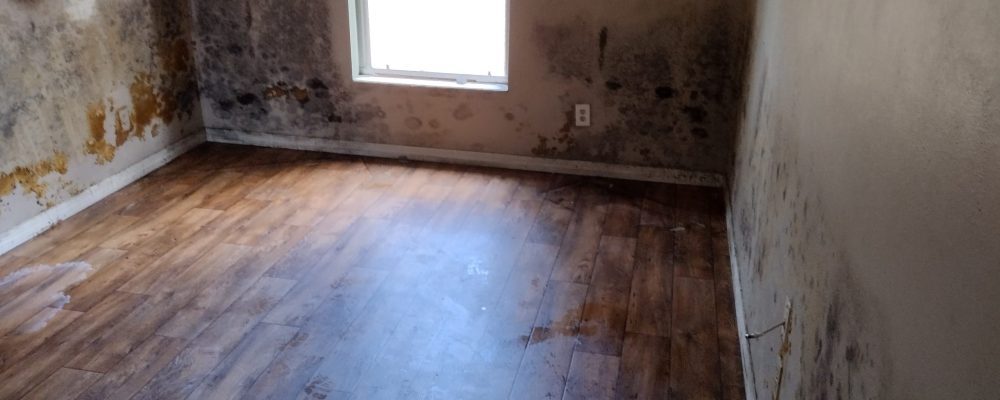
How to Prevent Mold Growth in Your Home
Now for the good news: you can prevent mold by keeping things dry, improving airflow, and staying on top of maintenance. Here’s how:
1. Fix Leaks Quickly
Whether it’s a dripping faucet, a leaky pipe, or a roof issue, it’s important to address water leaks as soon as you spot them. Even small leaks can lead to major mold problems over time.
2. Use a Dehumidifier
If you live in a humid climate (like much of Florida), running a dehumidifier can help keep indoor humidity levels in check. Aim to keep your home’s humidity below 50%.
3. Improve Ventilation
Make sure your bathrooms, laundry areas, and kitchens have proper ventilation. Use exhaust fans when cooking or showering, and consider opening windows regularly to let fresh air circulate.
4. Dry Wet Areas Right Away
Spilled a drink on the carpet? Washing machine overflowed? Don’t wait to clean it up. Mold can start growing fast, so dry the area thoroughly and use fans if needed to speed things up.
5. Clean and Maintain Gutters
Clogged gutters can lead to roof leaks and water pooling around your home’s foundation. Clean them regularly and make sure downspouts direct water away from your house.
6. Seal Windows and Doors
Check that your windows and doors are sealed tightly to prevent water and humidity from sneaking in. Weatherstripping and caulking are inexpensive fixes that go a long way.
7. Use Mold-Resistant Materials
If you’re remodeling, consider using mold-resistant drywall, paint, and insulation, especially in high-moisture areas like bathrooms or basements.
8. Monitor Your Basement and Crawlspace
Basements and crawlspaces are mold magnets due to their cool, damp conditions. Install a vapor barrier, make sure the area stays dry, and inspect regularly for moisture. Though most of us in Florida don’t have basements, its still an important thing to note for others who are reading this.
What to Do If You Spot Mold
If you see mold on a surface in your home, it’s important to act fast. Though many of us want to DIY a lot of in home projects, traditional cleaning methods can actually make the issue worse. If you have a small amount of surface mold and would like to try on your own, it’s best to at least consult with a professional at some point to make sure the mold is completely removed. It’s also important to protect yourself from exposure, so don’t put yourself at unnecessary risk.
If the mold covers a larger area (typically more than 10 square feet), keeps coming back, or has spread to porous materials like drywall or insulation, it’s time to call in the professionals.
At Dry Me Out, we don’t just remove mold, we identify the moisture source and ensure your home is thoroughly dried and treated to prevent it from coming back.
Why Professional Mold Help Matters
Many homeowners try to handle mold on their own, and while that may work for very small areas, it’s easy to miss what’s happening behind the walls or under flooring. Our team uses professional tools like moisture meters and infrared cameras to detect hidden water and mold issues that aren’t visible on the surface.
We also use HEPA air scrubbers, industrial dehumidifiers, and antimicrobial treatments to make sure your home is safe and mold-free. And because we’re also experts in water damage restoration, we take care of the full picture, not just the mold you can see.
Need Help with Mold or Water Damage? Call Dry Me Out!
If you’ve noticed a musty smell, spotted suspicious stains, or recently had a water leak, don’t wait for mold to take hold. The sooner we can assess the situation, the easier (and cheaper!) it is to fix.
At Dry Me Out, we’re committed to keeping your home dry, clean, and healthy. We offer 24/7 emergency service, free assessments, and experienced crews who care about doing the job right. Whether it’s a small moisture issue or a major mold problem, we’re here to help.
Let’s dry it out before it becomes a bigger problem. Give us a call today!

